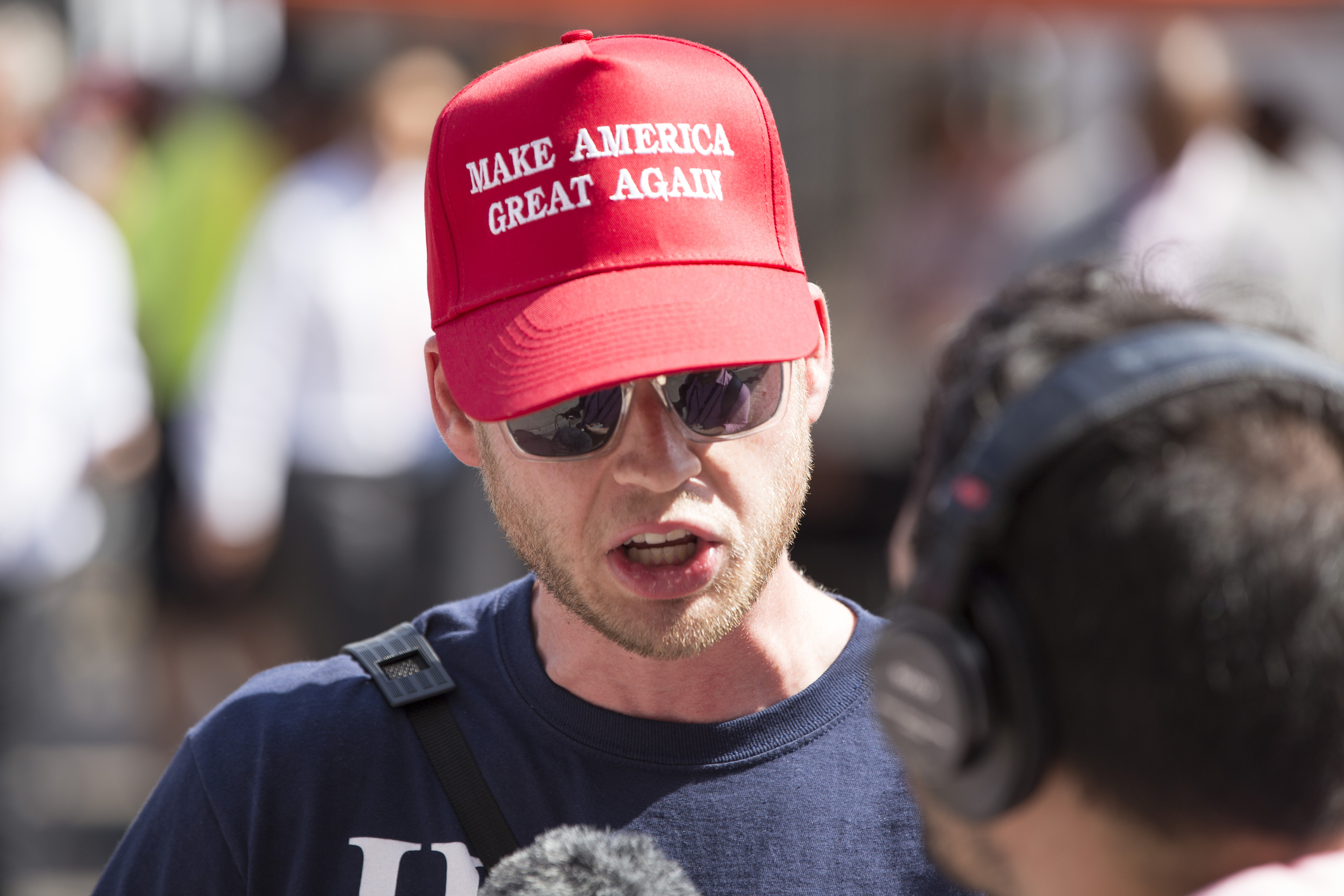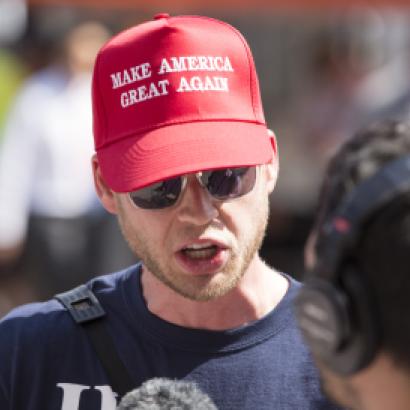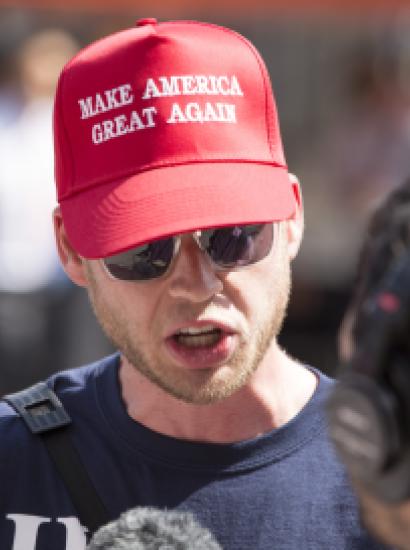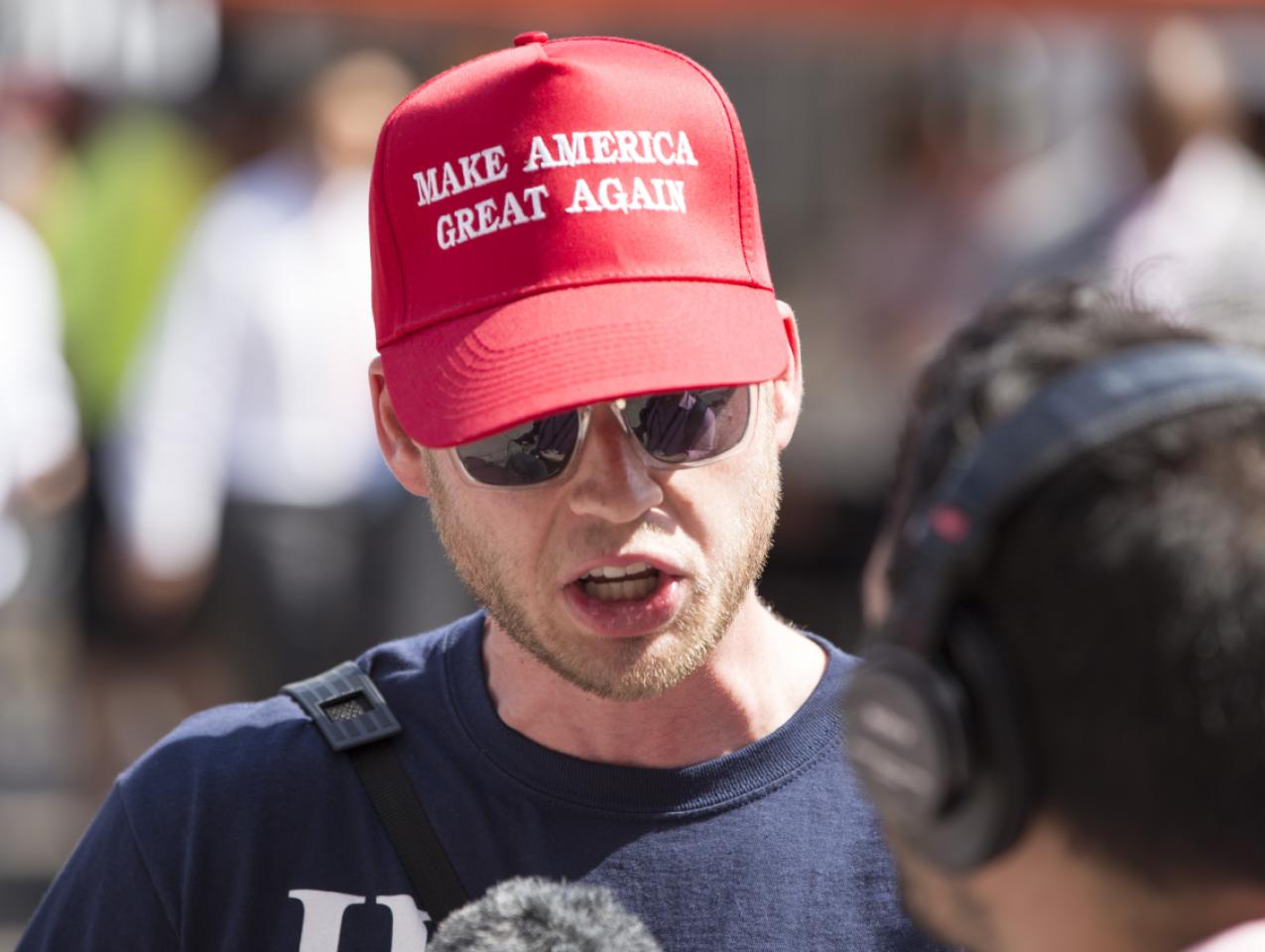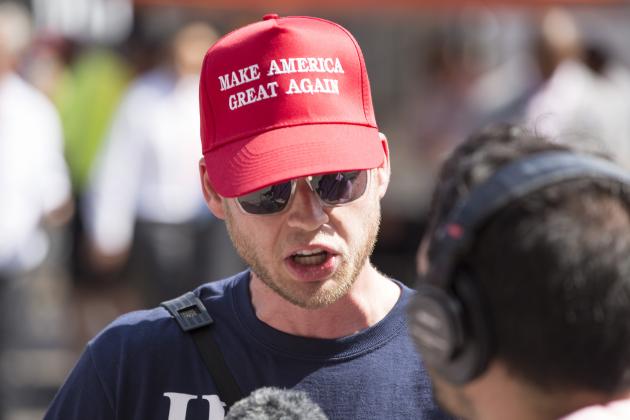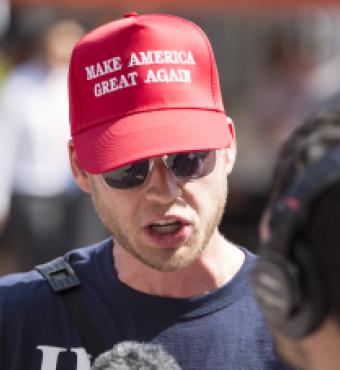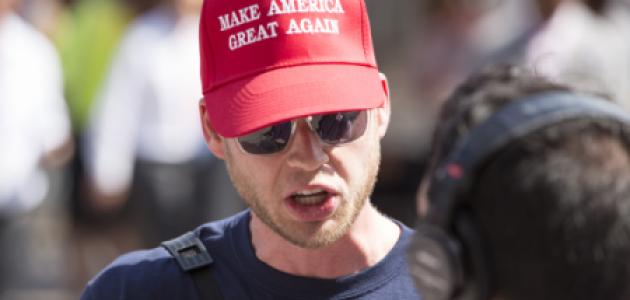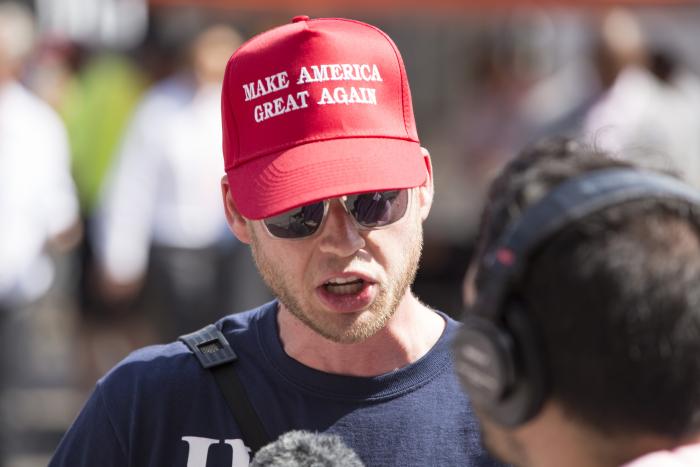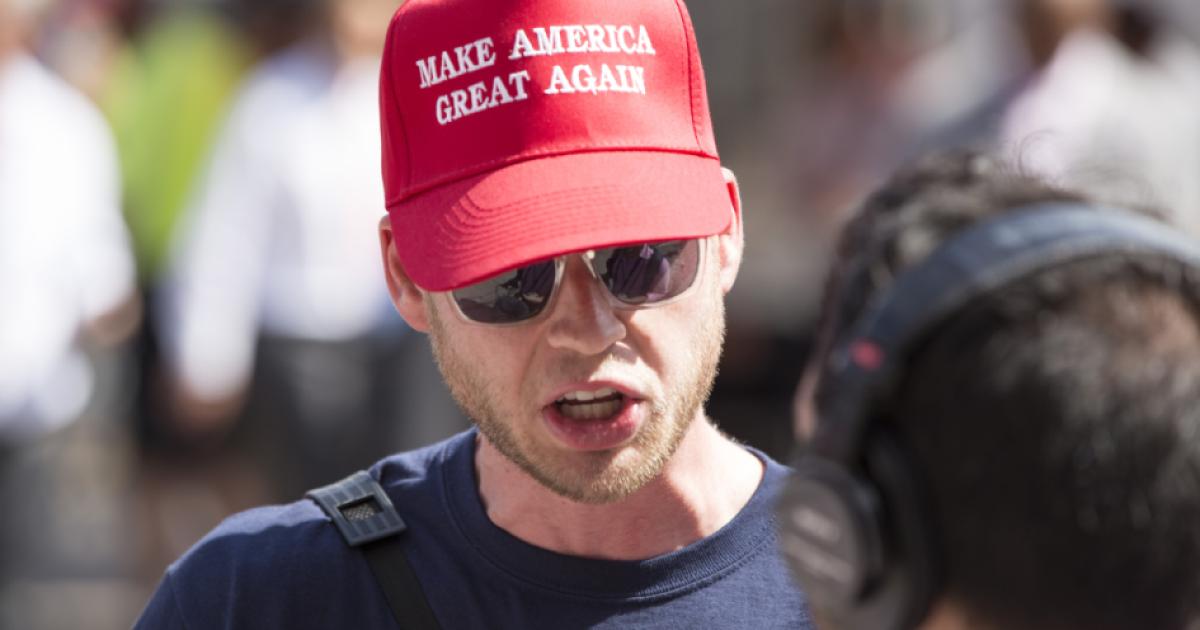- Economics
- History
- Politics, Institutions, and Public Opinion
In Part I, I covered the “very good indeed” parts of President Donald Trump’s economic policies: the 2017 tax cut and the deregulation and slowing of new regulation. Here I turn to the “horrid:” his attacks on free trade, his hostility to immigration, and his failure to do anything to rein in federal spending. As in Part I, I wear two hats in judging him: (1) as a believer in economic freedom and (2) as an economist who cares about people’s economic wellbeing.
First, consider trade.
Trump tightened import quotas on steel from Korea, Brazil, and Argentina. He increased tariffs on steel, aluminum, solar panels, washing machines, and a number of imports from China. Indeed, Trump has proudly called himself a “Tariff Man.” University of Chicago economics professor Casey B. Mulligan, formerly the chief economist with President Trump’s Council of Economic Advisers, has pointed out that, to his credit, Trump has been more of a believer in tariffs and less of a believer in import quotas than Ronald Reagan.
Why does this matter? One reason given by Mulligan is that quotas are an “America last” policy. Unless they are allocated to domestic businesses or sold by the U.S. government, quotas make foreign businesses into major beneficiaries while the U.S. Treasury gets bupkis.
That’s a nationalistic objection, but there is a consumer-welfare objection as well. For a given amount of import restriction, tariffs and quotas have the same effect on domestic prices only if the domestic industries in which the trade is restricted are highly competitive. In industries in which domestic firms have some market power, quotas increase that market power more than tariffs do, causing higher prices than tariffs would, hurting domestic consumers even more.
Although Mulligan makes a semi-persuasive case that Trump’s restrictions on trade have been no worse than the policies of avowed free trader Ronald Reagan, there is one important difference. Reagan, dealing with a recession in which the unemployment rate topped 10 percent, was responding to intense pressure not just from domestic industries but also from Congress. Trump, by contrast, has largely been the initiator of protectionism.
In the tweet in which he used the term “Tariff Man,” Trump justified tariffs as follows:
When people or countries come in to raid the great wealth of our Nation, I want them to pay for the privilege of doing so. It will always be the best way to max out our economic power. We are right now taking in $billions in Tariffs.
What did Trump have in mind when he said that “people or countries come in to raid the great wealth of our Nation?” He didn’t specify in that tweet, but if we go by his past statements, he sees low-price imports as a raid on our wealth.
If we apply the same reasoning to a trip to Costco, he would see Costco selling delicious Kirkland bacon to me as a raid on David Henderson’s wealth. Of course, it isn’t. The lower the price I pay for a given product, the better off I am. Low prices enhance my wealth rather than destroy it. Virtually everyone understands that in a domestic context. The reasoning doesn’t magically change when the goods we buy cross a border.
Trump has imposed tariffs and tightened import quotas on many goods from many countries partly because he doesn’t seem to understand gains from exchange and partly to use those tariffs as leverage to get other countries to drop their tariffs or to get those countries, mainly China, to respect intellectual property rights.
Various economists have shown that there is a potentially good argument for such a strategy. If it works, then the other countries against whose imports the tariffs are aimed drop their tariffs and the country that imposed the strategic tariff ends up with tariffs that are no higher than when they were imposed. They have also shown, though, that such a strategy is fraught with peril and rarely works.
Can you say Smoot-Hawley? That was a tariff law passed in 1930, early in the Great Depression. Utah Senator Reed Smoot and Oregon Representative Willias C. Hawley, both Republicans, initiated the bill as a limited measure to put tariffs on farm imports but, as it worked its way through Congress, more and more tariffs were added. A petition against the bill was signed by 1,028 economists. To put that in perspective, there were probably only about 5,000 bona fide economists in the United States at the time, which means that 20 percent of economists signed it. Nevertheless, despite calling the bill “vicious, extortionate, and obnoxious,” President Herbert Hoover signed the bill.
The result was a trade war as other countries retaliated with tariffs. Dartmouth College economist Douglas Irwin, arguably the nation’s preeminent economist on trade, has shown that trade was such a small part of the U.S. economy at the time that the Smoot-Hawley Act was not a leading cause of the Great Depression. But it did make the Depression worse than otherwise.
To be sure, Smoot-Hawley was not conceived of as primarily a strategic move to get other countries to drop their tariffs. But the “chicken tax” was. This was a 25 percent tariff that President Lyndon B. Johnson and the U.S. Congress imposed in 1963 on imports of light trucks in response to a tariff that the German and French governments had imposed on U.S. chickens. How did that work out? Fifty-five years later, the tariff rate on all light truck imports is . . . . 25 percent.
It’s also true that many Chinese companies have violated the intellectual property rights of Americans and that one of President Trump’s stated goals has been to get the Chinese government to enforce those IP rights. To his credit, he has gone to the World Trade Organization to push for enforcement of those rights. But he has also played a high-stakes game to get the WTO to change some of its rules by blocking appointment of new members to the WTO’s appellate body. After December 10 this year, only one member will be on the body, and one does not constitute a quorum. There’s a good chance that Trump’s protest about the Chinese government’s failure to enforce IP rights will go nowhere.
One of Trump’s worst policies has been on immigration. But why mention immigration in a discussion of his economic policies? Go back to my two criteria. First, restrictions on immigration are not just restrictions of the freedom of foreigners; they also reduce the freedom of legal American residents. A law that says a property owner is not allowed to rent to a willing foreigner violates the property rights of the owner. A law that says an employer is not allowed to hire a foreigner violates the employer’s freedom of association. Second, such laws hurt economic well-being, not only of foreigners but also of legal U.S. residents.
Whereas many defenders of Trump’s policies say that his major concern is illegal immigration and that he does not object to legal immigration, Trump’s policies and policy proposals belie that claim. Trump wants less illegal immigration and less legal immigration. Consider the RAISE Act, which Donald Trump supports. RAISE is the acronym for “Reforming American Immigration for Strong Employment.” That Act would cut from one million to about 500,000 the number of green cards issued every year and would impose a cap of 50,000 on the number of refugees allowed each year. It would also end the visa diversity lottery under which 50,000 lucky lottery winners a year got to immigrate legally. The bill has not passed, and so it’s not accurate to blame or credit President Trump for this measure. I mention it for two reasons: (1) to show that Trump is hostile to legal immigration and (2) to argue that his support for this and other immigration measures, to be mentioned shortly, has probably discouraged people from immigrating to the United States, illegally but also legally.
It is difficult to catalogue, let alone estimate the effects of, President Trump’s many actions on both legal and illegal immigration. The many actions that Trump has taken show that one of his true policy passions is to limit immigration. All of the actions that have stuck are administrative ones. Although federal judges have overturned some of those actions, others are being implemented.
Take, for example, the cap on refugees. In fiscal year 2016, which ran from October 1, 2015 to September 30, 2016, the Obama administration accepted 84,995 refugees. President Trump limited the number of refugees to 45,000 in fiscal year 2018. In 2018 U.S. Secretary of State Mike Pompeo announced that the limit would be cut further to 30,000 in fiscal year 2019 and last September, the Trump administration announced a further cut to 18,000 in fiscal year 2020. This is the lowest level since the refugee program began in 1980, even though the U.S. population is 45 percent larger than it was in 1980.
Trump’s administration has also increased enforcement of laws against employment. In 2019, Immigration and Customs Enforcement (ICE) carried out raids on employers in Ohio, Tennessee, and Mississippi. For those who think that “they’re taking our jobs,” this makes sense. For those people, including many economists, who notice that the U.S unemployment rate at 3.5 percent is the lowest it has been since December 1969, this makes little sense. I sympathize with immigration critics who worry about the tax burden of supporting welfare spending for illegal immigrants. For that reason, the worst place to direct enforcement efforts is in the workplace. Immigrant workers, especially illegal immigrant workers, are the people least likely to be on welfare.
Supporters of Trump’s measures against immigrants often argue that they want to reduce immigration to reduce crime. What that ignores is that the group with the highest rates of imprisonment is not immigrants but those who were born in America. In a study published earlier this year, Michelangelo Landgrave of UC Riverside and Alex Nowrasteh of the Cato Institute showed that the incarceration rate for illegal immigrants was 756 per 100,000. That’s about double the 364 rate for legal immigrants, but only about half the 1,471 rate for native-born Americans. Yet no one advocates deporting American-born criminals.
I noted above that Trump’s actions have probably discouraged immigration. One check of the data bears that out. According to U.S. Census data collected every year, the number of foreign-born people in the United States increased between 2011 and 2017 by an average of 691,000 and during that time the smallest increase was 446,798 in 2012. But between 2017 and 2018, the number dropped to an astoundingly low 202,866.
That means that not only will we do without workers in the low-wage occupations like agriculture but also that we will likely miss out on budding entrepreneurs. Arnobio Morelix, an analyst at the Kauffman Foundation, found that immigrants “are about twice as likely as natives to start a new business.”
Finally, Trump has not tried hard to rein in government spending. When Congress passed a budget plan in March 2017 that eliminated the Obama-era spending caps, Trump signed the bill. Earlier this year, when Congress passed another profligate spending bill, Trump signed that one too. The federal government’s revenue for Fiscal Year 2019, at $3,462 billion, was a hefty $133 billion more than in fiscal year 2018, an increase of 4 percent. But the fed’s spending in FY2019, at $4,447 billion, was a whopping $339 billion more, an increase of 8.3 percent.
A rough and ready way to judge the effects of Donald Trump’s economic policies, as I noted in Part I, is to compare the average annual growth of GDP with that of his predecessor, Barack Obama. By that measure, which, as I noted, is biased slightly in favor of Obama, Trump is outpacing Obama by about 0.5 percentage points of growth annually. Were he to reverse his policies on trade, immigration, and government spending, he would do even better.







